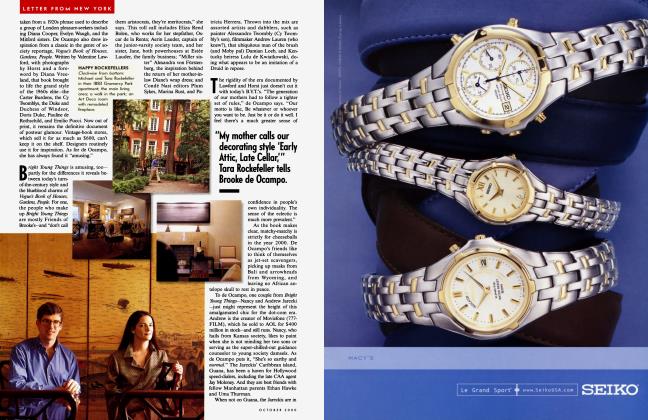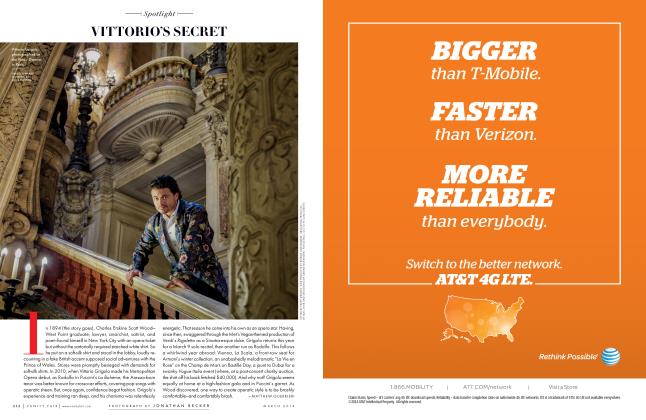Sign In to Your Account
Subscribers have complete access to the archive.
Sign In Not a Subscriber?Join NowVintage Paint
JOEL L. FLEISHMAN
GROWING GRAPES GRACEFULLY IN NORTHERN CALIFORNIA
There are fewer than half a dozen American vineyards that consistently produce grapes of such quality that their names inspire awe among wine lovers. Perhaps the most distinguished of these is Martha's Vineyard, forty acres
in the Napa Valley owned by Martha and Thomas May, who grow grapes but do not themselves produce wine. Year after year, starting in 1966 (with the exception of 1971), the California vintner Joseph Heitz has pressed, fermented, and aged their Cabernet Sauvignon grapes into the Chateau Lafite of American wines—Heitz Cellars Martha's Vineyard. Some of its vintages, such as 1968, 1970, and 1974, are legendary. In all years it is very near the top of every connoisseur's list of the best red wines in the world. It sells for about the same as Lafite and is the first American wine ever to be released at above twenty dollars.
Martha's Vineyard produces a wine with frequently astounding flavors. At their center is an intense black-currantand-cassis taste that would overwhelm were it not framed by eucalyptus. The resulting tension between the opulent fruit and the austere mint produces a wine of both grace and power, perhaps the most classically sculptured wine made on this continent. Not all wine drinkers admire its style, however. Those who prefer fruity, uncomplicated wines usually take exception to the pronounced mint flavor. Most great Bordeaux contain just as much of this flavor as Martha's Vineyard, and one never hears them called overminty, but the goal of most California wine-makers was until recently, and for many still is, a wine of unreservedly assertive fruit flavors—berries, cassis, and black currants—totally unchastened by any contrasting flavors.
The wines of Martha's Vineyard, along with similar efforts by Robert Mondavi and Warren Winiarski of Stag's Leap Wine Cellars, are meant to be subtle combinations of flavors, like Bordeaux. One expects a Bordeaux to be minty, and the touch of mint contributes to a Bordeaux's elegance and balance. The mint in a Martha's Vineyard wine creates the impression of a silver frame around velvet fruit, a frame that constrains, shapes, and indeed implodes that fruit, magnifying its complex power on the palate.
A mile and a half north of the land -ZVcultivated by the Mays is a less famous vineyard, Bella Oaks, planted by Belle and Barney Rhodes, who once owned and planted the vines that formed the original twelve-acre nucleus of today's Martha's Vineyard. In 1962 Barney Rhodes became weary of commuting between his vineyard and his job as a health-plan executive in Oakland, and he sold his land to the Mays before the first crop of wineproducing grapes came in. The Mays gradually added another twenty-eight acres and have established their own reputation as highly skilled growers of red grapes that are among the finest in the world.
Eight years after the sale, Barney's yearning for the Napa Valley overcame his fear of commute fatigue, and after a round of careful research and soil analysis the Rhodeses bought and planted a new vineyard. Bella Oaks produced its first wine, vinified by Joseph Heitz and sold as Heitz Cellars Bella Oaks, in 1976. The three vintages released since have already earned it almost the same admiration as Martha's Vineyard, and have enabled it to command almost the same price.
Barney Rhodes does not make his living growing grapes. He is a dermatologist-tumed-health manager, and he still commutes from the Napa Valley to Oakland every day. His wife is a culinary expert, wine authority, and collector of cookbooks. Both of them are expert chefs and frequently entertain at their home, which is surrounded on three sides by the vines of Bella Oaks. At those dinners of exceptional food and six to ten different wines, one can usually find wine luminaries from England and France as well as from California. The Rhodeses spend at least four weeks each year in London, where Barney Rhodes is one of the two American members of the most prestigious wine society in the world—the Saintsbury Club, limited to only fifty persons. Many of its members have spent evenings at Bella Oaks, and the Rhodeses in turn have been invited to some of the world's great tastings, such as the famous Marvin Overton "Lafite in Texas" tasting in 1979, which included Chateau Lafite-Rothschild vintages from 1799 to 1975.
Barney Rhodes is a soft-spoken silver-haired man with the demeanor of a country doctor. He is renowned as a wine-tasting judge, and his habitual understatement is as legendary as is the repute of the wines he has fathered. What others describe as "extraordinary," he calls "pleasant." To him, a rough, tannic mouth burster is "a little young" or perhaps "a trifle mean." He has a great gift for selecting the land and nurturing the vines from which great wine is made, and with Martha's Vineyard and Bella Oaks he has created two benchmarks in the world of Cabernet Sauvignon.
 View Full Issue
View Full Issue


















Subscribers have complete access to the archive.
Sign In Not a Subscriber?Join Now